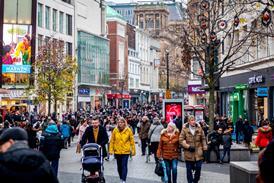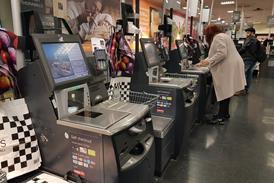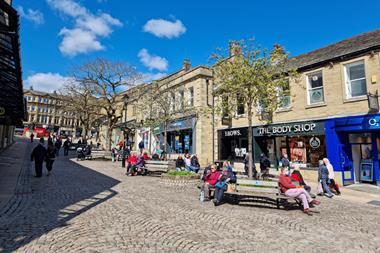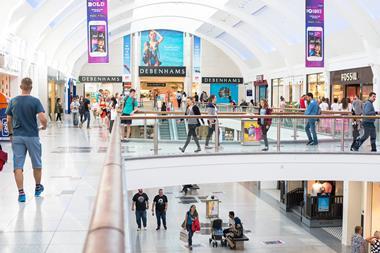PROMOTIONAL RESEARCH
The future of the UK high street is at stake as the country emerges from the grips of the pandemic, but to ensure consumers return in greater numbers it is important to understand exactly what they want. Retail Week’s High Street Rebooted 2021 report uncovered the views of 1,000 UK consumers and we will be sharing its findings during Stores Week on May 20.
UK consumers want their high streets packed with big names, independent outlets and more choice if they are to continue to use them, according to a Retail Week survey of 1,000 UK shoppers.
Although goodwill to the high street is there in principle, the reality is rather different, with factors such as expensive parking and poor product choice playing their part in pushing shoppers online. So, the challenge for high street retailers in 2021 and beyond is to ensure the offering to consumers is varied, good value and straightforward.
With more than half (52%) of consumers surveyed admitting they spend less money on high streets than they did five years ago, it’s never been so important for retailers to understand what makes the average UK shopper tick.
On May 20, Retail Week will be exploring tomorrow’s high street during the free-to-attend Stores Week masterclass.
Register your place now to find out how to create spaces where consumers really want to shop.
Retail Week’s High Street Rebooted 2021 report features research with 1,000 UK consumers on their attitudes towards the high street and its role in the day-to-day shopping experience. Here are five ways retailers can guarantee shoppers will stay on the high street.
1. Make it convenient
Of the many reasons why UK shoppers choose to visit their high street, sheer convenience is the most popular, with 42% naming it as their key motivation.
In addition, 25% value the ability to try on and test products in store – a further benefit of high street retail compared with online.
Price is another key aspect, valued by 38% of UK shoppers – even more so in the Northwest (46%) and Southwest (44%), – while nearly a quarter (24%) are keen to support their local community.
2. Provide big brands
When asked what should happen to their local high street, the most popular response was for it to include more well-known shops.
Nearly a third of consumers (31%) would like to see high street staples in their neighbourhood, while a quarter (25%) want more independent retailers.
The youngest age group surveyed (17- to 24-year-olds) expressed a desire for a combination of residential, retail and leisure facilities, and mixed-use development is indeed on the rise in the commercial property sector.
However, the prospect of high streets becoming solely residential or merely a vehicle for leisure facilities was deeply unpopular among UK shoppers, with scant support across all age groups.
3. Understand what consumers dislike
More than half the shoppers surveyed (59%) say they feel an obligation to support their local high street – twice as many as the percentage who say they don’t feel compelled to do so (26%).
Unfortunately, this sentiment isn’t backed up by action, so understanding why consumers stay away is crucial if retailers are to attract them back.
More than a quarter (26%) say they can shop elsewhere, while difficult and expensive parking (22%), unappealing and outdated shops (14%) and narrow product offerings (14%) all contribute to deterring shoppers.
4. Recognise it’s everyone’s problem
Shoppers lay the task of revitalising UK high streets with the government (25%) and councils (23%), with retailers some way back on 12%.
However, High Streets Task Force executive director Simon Quin believes “rethinking a town has to involve all of the community: businesses, transport operators, et al”.
“The government needs to make it a fair place to trade; retailers need to make it innovative; and customers have to think about the dynamics of the market and understand it’s a big part of the UK economy”
Louise Hoste, Spar UK
Spar UK managing director Louise Hoste agrees: “Everyone has a part to play.
“The government needs to make it a fair place for us all to trade; retailers need to make it innovative and give customers what they want; and customers have to think about the dynamics of the market and actually understand it’s a big part of the UK economy.”
5. Offer something new and different
Despite the goodwill shown by UK shoppers towards their high streets, a mere 8% admitted they were likely to visit them more over the next 18 months than they did before the pandemic.
With this in mind, retailers cannot sit back and assume numbers will increase once Covid becomes less of an issue.
Majestic Wine executive chair and chief executive John Colley warns that retailers must devise ways to offer consumers new experiences and make their shops “a place they are prepared to visit”.
“There can be no resting on your laurels or just opening the door and expecting people to come back in,” he says.
“We need to keep providing an experience and service that is fundamentally compelling.”
These five key ways to get consumers back on the high street are just a snapshot of the insights available in the High Street Rebooted 2021 report, which contains in-depth data breakdowns across 12 UK regions, as well as expert views from UK retailers.
As online retail grows ever stronger, the role of the store is evolving, so it’s essential to know how to adapt to meet consumer demand while remaining profitable.
Retail Week’s first ever Stores Week will provide the answers.
Running from May 17 to May 21, Stores Week will provide expert opinion from the people that matter across free in-depth articles and special virtual masterclasses, including Tomorrow’s high street: Creating spaces where consumers really want to shop, featuring insight from Arcadis UK head of retail Richard Denton and High Streets Task Force board member Emma Mackenzie.
Register your free place for the Tomorrow’s high street panel discussion today.











![Ollie Pryor[46]](https://d53bpfpeyyyn7.cloudfront.net/Pictures/274x183/1/7/1/3119171_olliepryor46_336332_crop.jpg)

















